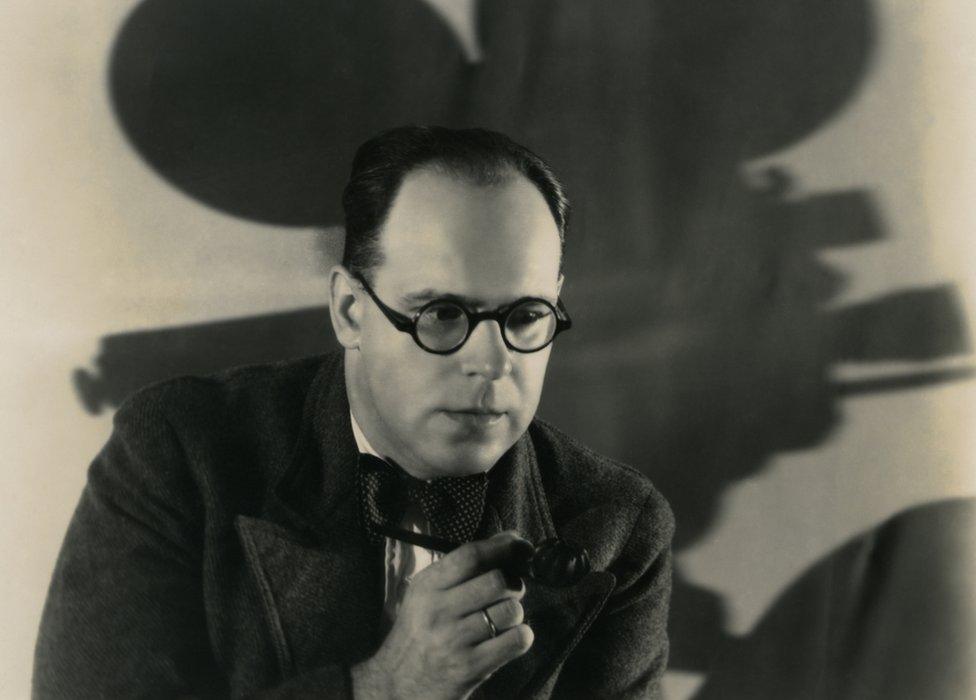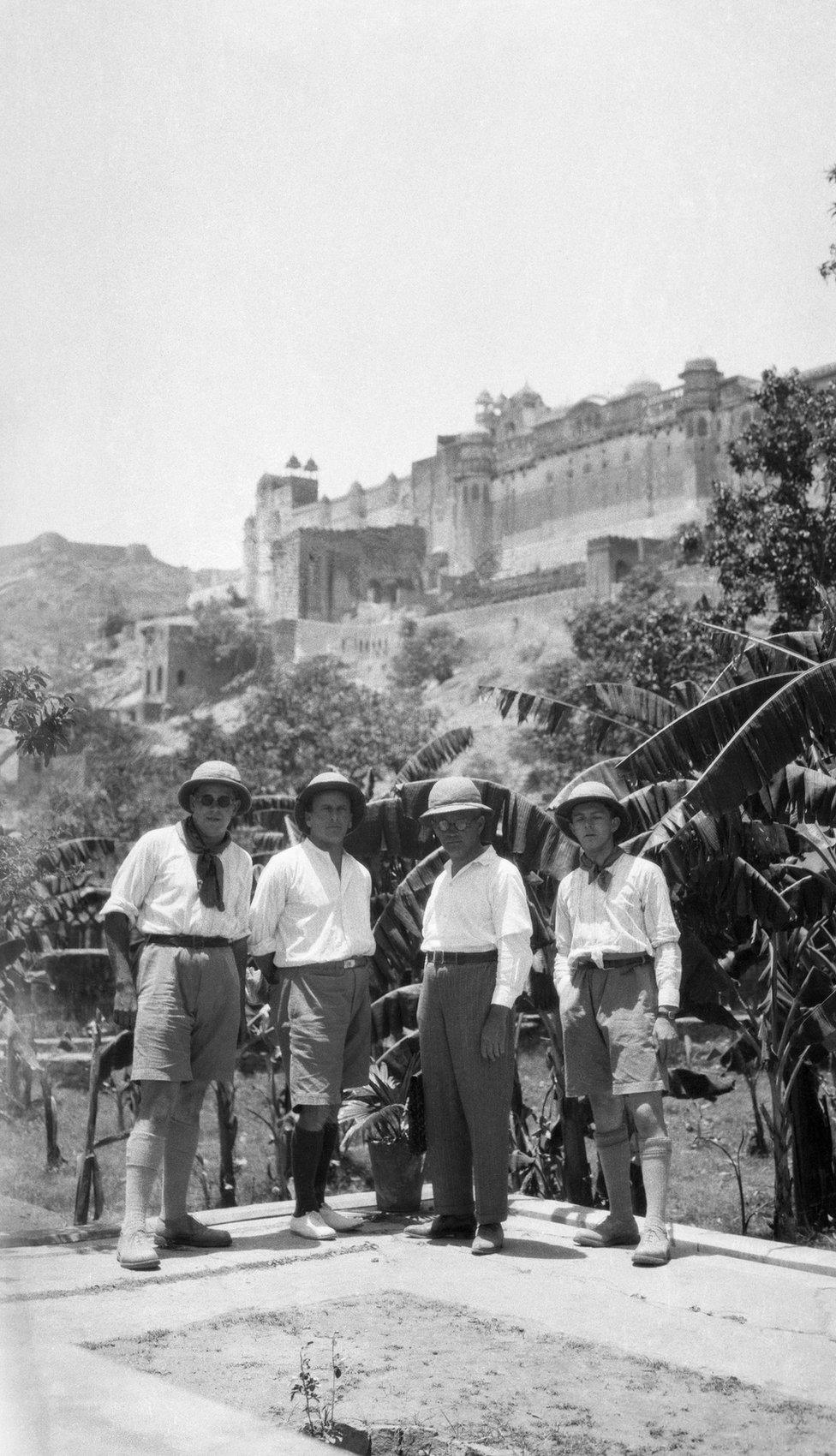A German cinematographer's love affair with Indian cinema
- Published

Munich-born Josef Wirsching worked on over 17 Hindi and Urdu films
Even as World War Two broke, Josef Wirsching was busy on the movie sets in Bombay (later renamed Mumbai), often called the Indian city of dreams and home to Bollywood.
The Munich-born German worked on more than 17 Hindi and Urdu films as the cinematographer of Bombay Talkies, a studio set up by the legendary movie mogul Himanshu Rai and star actress Devika Rani.
Wirsching had worked with German filmmaker Franz Osten at the Emelka Film Studios in Munich for The Light of Asia, a classic silent film on the life of Buddha in the 1920s. His first visit to India was during the production of The Light of Asia.
After the filming Wirsching and Osten returned to Germany. However due to the pressure on filmmakers to produce propaganda film material in Nazi Germany, Wirsching preferred to take up the invitation of Rai to return to work in India, offering technical expertise for the Bombay Talkies, a studio which defined mainstream films.

Wirsching (right) on location in India with Osten in 1937

Devika Rani and Najam-ul-Hussain in the film Jawani ki Hawa
"Wirsching travelled back and forth between India and Europe in a customised Mercedes Benz car carting his photographic equipment," says Rahaab Allana, who helped curate a recent exhibition of rare photographs of Wirsching's work.
Even as Osten returned to Germany, Wirsching worked as the Indian studio's cinematographer and later as the director of photography for other studios in Bombay.
He was the cinematographer for popular hit Hindi films including Jawani ki Hawa (1935), Achhut Kanya (1936), Mahal (1949), Dil Apna Preet Parai (1960) and the iconic Pakeezah (released later in 1972). Wirsching died in India in 1967.
"His contribution is considered an important part of cinematic heritage of the talkies in India," says Mr Allana.
The more than 130 photographic works by Wirsching were on display for the first time at an exhibition in Goa.

Wirsching shot the iconic movie Pakeezah

On the set of a movie called Vachan in Bombay, 1938
The photographs highlight Wirsching's pioneering contribution as a cinematographer and as a documentarian who recorded the locations, behind-the scenes activities and candid moments of the actors on movie sets.
The Wirsching archives are an invaluable collection of rare originals and digital reprints which span from 1925-1967.
"This is an unseen archive material", says Mr Allana.
The photographs have been collected from the personal archival collection of some 4,000 artefacts including photo negatives, prints and cards in possession of Wirsching's grandson, Georg, a visual artist based out of Goa.
There are also photographs taken by Wirsching on his travels across Asia and Europe and of him working on the sets.
Wirsching took to using a small handheld Leica camera, one of the first to use 35mm film and which went into production in 1925, and began taking still photographs on Mumbai's already thriving film industry.

The Light of Asia Team filming in India, 1925

Wirsching's picture of Devika Rani and Kamta Prasad in Izzat
Wirsching's contribution had an extraordinary collaborative impact on the filmmaking of the time in India and the cinematic idiom of the day.
"Wirsching brought a European internationalism to Indian cinema and aspects of modernism also took root in the secular themes of films like Achhut Kanya that questioned untouchability", says Mr Allana.

A still from the Osten's crime thriller Jawani ki Hawa, 1935

Himansu Rai, Devika Rani and Ashok Kumar having lunch on the sets of Izzat
Wirsching is also credited for bringing aspects of German Expressionism including dreamy lighting, atmospheric compositions, unconventional camera angles and fantastic images to the Indian talkies.
His camerawork brought luminosity to the screen and turned the heroes and heroines of the time like Devika Rani, Leela Chitnis, Ashok Kumar and Dilip Kumar among others into ethereal creations on celluloid.
On his 50th death anniversary, Wirsching's photographs are a reminder of a man who, in exile, turned out to be a pioneer in film and image making in a foreign land.
Photographs courtesy the exhibition, A Cinematic Imagination: Josef Wirsching and the Bombay Talkies. The show was a collaboration between Serendipity Arts and the Alkazi Foundation. The show was curated by Debashree Mukherjee and Rahaab Allana and Georg Wirsching.